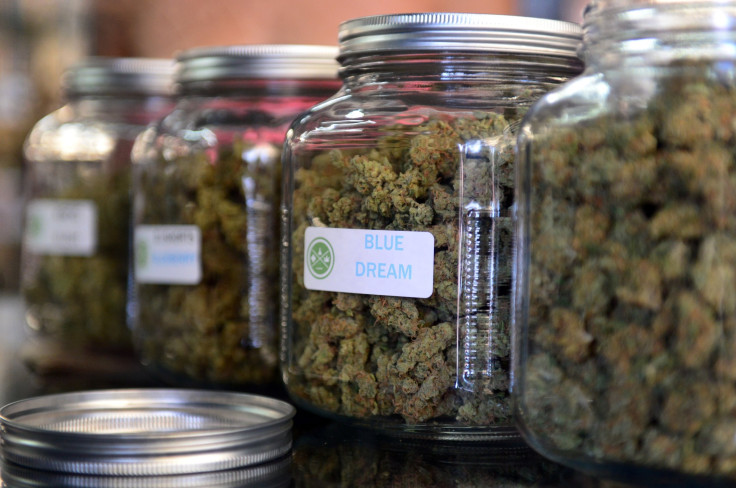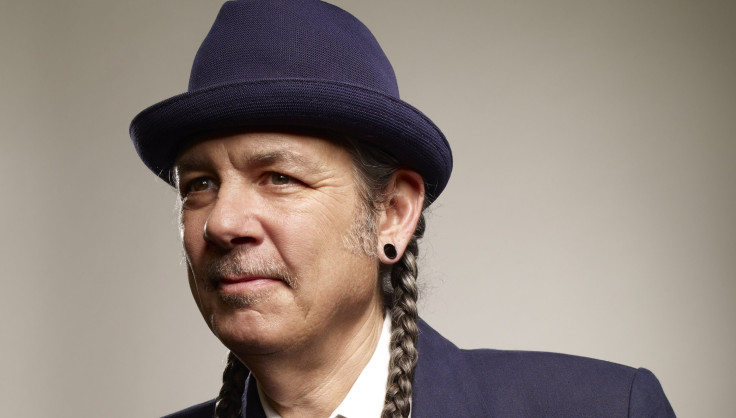Marijuana Legalization In California: Is The State’s Cannabis Industry Too Divided To Take Advantage Of It?

In early January, the California Growers Association (CGA), an organization of marijuana farmers, gathered at the Sacramento Grand Ballroom in the state’s capital to nail down political strategy for the coming year. By most indications, the mood in the sweeping ballroom, with its intricate chandeliers and gilded ceiling, should have been jubilant. In just a few years the association had evolved from a provincial group with only a single full-time grower on its seven-member board to a statewide operation with 550-plus members and a leadership team comprised of young, energized marijuana growers ready to move out of the shadows.
“Half of my board is third-generation farmers, people who grew up in the drug war, lying about what their parents did and wishing they were normal,” said Hezekiah Allen, CGA’s executive director and Humboldt County native, in an interview last year. “And we are in charge now.”
These farmers are coming out in a big way. On Tuesday, the Adult Use of Marijuana Act (AUMA), a major cannabis legalization initiative backed by deep-pocketed funders and major marijuana organizations, qualified for California’s November ballot. If it passes, AUMA will launch a legal cannabis industry in the world’s eighth-largest economy. AUMA builds off of the Medical Marijuana Regulation and Safety Act (MMRSA), a series of three bills passed last year that will launch California’s first-ever statewide medical marijuana regulations over the next two years. (While California voters legalized medical cannabis in 1996, marijuana regulations have varied widely across the state.) Together, AUMA and MMRSA pave the way for those who’ve long operated in the state’s marijuana grey market – including California's estimated 53,000 small-scale cannabis cultivators – to become key players in the new regime.
But instead of coming together to celebrate these seismic shifts, the CGA and other cannabis industry stakeholders in California are beset by infighting over what, exactly, their state’s marijuana market should look like. Some people in the business are up in arms over a MMRSA provision that will require, as of 2018, that all medical marijuana pass through distributors for testing and quality assurance before it’s sold, and these critics say the rule was put in place thanks to alcohol interests working alongside CGA. While AUMA doesn’t require a similar distribution system for its proposed recreational marijuana industry, cannabis business interests on both sides of the MMRSA debate have serious misgivings about legalization efforts this year. When Allen broached the subject at CGA’s January planning meeting, he said only a handful of the 200-plus marijuana farmers in attendance supported AUMA or any of the other legalization initiatives that were then on the table. The votes changed, he said, when he asked how many would prefer to delay legalization to 2020.
“Pretty much every hand in the room went up,” said Allen, who estimated 85 percent of his members didn’t want to legalize this year. “The clear takeaway for me was [that] no one was excited about any of these legalization initiatives.”
The issues at stake in California cut to the heart of the entire marijuana legalization movement: Should cannabis really be regulated like alcohol? How do you track and safeguard an intoxicating substance without putting a chokehold on the market? How do you protect the needs of small and large industry players alike? If California’s main marijuana players can’t get agree on these matters now, does that mean the state’s much-watched 2016 legalization attempt is destined for failure? Or will it just mean that those in the state marijuana business now will be so busy squabbling that they'll be left behind as their livelihood goes legit?

No other medical or recreational marijuana market around the country requires a distribution system similar to that mandated by MMRSA – cultivators are allowed to sell directly to marijuana processors and retailers. But that doesn’t mean the arrangement is novel. After the repeal of prohibition, lawmakers set up the alcohol industry as a three-tier system, with alcohol producers like Budweiser and Miller selling to wholesale distributors who then sell to retailers. “The whole logic of the alcohol model is that we didn’t think it was like other businesses, where the more sales the better,” said Keith Humphreys, a Stanford University health policy professor and co-chairman of California’s 2015 Blue Ribbon Commission on Marijuana Policy. “Making it less efficient is good. The other part is it gives you that common choke point to track taxes. Now, because it raises costs, businesses don’t like it.”
Ostensibly, those who can least afford the costs and market inefficiencies of the distribution step would be small producers like California’s craft cannabis growers, who have operated with little or no regulatory restrictions. What’s surprising, then, is that the public face of opposition to the marijuana distribution model isn’t a grower — it’s Steve DeAngelo, CEO of Oakland, California-based Harborside Health Center, the largest medical marijuana dispensary in the country.
“People need to make sure their cannabis is taxed, that it is tested and not diverted [to the black market], but every other state has done this without the mandatory distributor level,” said DeAngelo, who’s been spearheading a campaign to remove the mandatory distributor step that includes op-eds and video segments. According to DeAngelo, the 15 to 35 percent fees distributors generally charge for their services could greatly increase shelf prices, leading people to opt for cheaper black-market options. The distributor step could also delay the sale of time-sensitive marijuana products, whose chemical components can shift as time goes on. Finally, the requirement could limit the ability of small farmers to undertake creative business enterprises such as farm-to-table dinners, “bud and breakfast” excursions, and community-supported agriculture programs.
“[At Harborside] we deal with 700 to 1,000 small growers,” said DeAngelo. “These are people who have been coming to the shop for a decade. Now we won’t be able to do business with them anymore.”
DeAngelo thinks the person who stands to gain the most from the distribution requirement is Ted Simpkins, former head of the California division of Southern Wine & Spirits, the country’s largest alcohol distributor, and now CEO of River Wellness, a major new California marijuana distribution company. According to a recent Los Angeles Times article, since early 2015 River has spent nearly $150,000 lobbying and donating to key lawmakers behind MMRSA. (River and Simpkins declined an interview request.)

What’s striking to some observers is that alongside River, one of the other main supporters of the distributor model is the CGA. “I am not sure why CGA has come out publically in support of that model,” said Lynne Lyman, state director of the Drug Policy Alliance's California chapter. “The only thing I can surmise is they must have made a deal.” Lyman isn’t the only one asking questions of CGA and River’s relationship; both operations hired the same California lobbyist, and a River representative now sits on CGA’s board.
At the CGA, Allen understands why some people would question his organization’s support of the distributor step. But as he worked with lawmakers last year to hammer out what would become MMRSA, Allen realized that law enforcement and officials would require a step in the production chain where they could track, test and tax the product, and one of the most practical ways to do so was similar to the three-tier alcohol distribution model, which accommodates small craft brewers while prohibiting beer behemoths from taking over the industry. “We had to accept some sort of supply-chain control model, and this is the one that worked,” he said. “And it became apparent that the craft beer and wine industries are a really good analogue for our industry.”
Some CGA members dispute DeAngelo’s claims that mandatory distributors will jack up prices and delay times to market. These farmers say California’s existing unregulated medical marijuana supply chain is already costly and time-consuming. “I am actually excited about the idea of a distributor who is going to come and take my harvest and put it on the shelves for me,” said Casey O'Neill, a third-generation marijuana farmer who’s the owner of HappyDay Farms in Mendocino County and CGA board chairman. “I don’t want to drive down to the city. I want to stay on my farm.”

In fact, say some farmers, the biggest risk to their bottom line has long been licensed dispensaries, which have forced down marijuana wholesale prices while keeping retail rates largely steady. That’s what some farmers say is the reason DeAngelo has mounted a major offensive against marijuana distributors – he doesn’t want them cutting into his profits.
From that perspective, it makes sense for CGA to form an allegiance with River, which according to Allen has worked hard to form relationships in the grower community. Partnering with a power player like Simpkins might finally give farmers leverage to set more favorable prices.
“I think the biggest issues have arisen when Steve DeAngelo stands up and misrepresents MMRSA and says he’s the voice of small farmers in California,” said Patrick Murphy, a CGA member who’s been growing marijuana in Willow Creek, California, for more than 20 years. “He’s been a little bit of a tyrant to small farmers by driving down prices. Steve DeAngelo wants you to believe you’re in better hands with him than with a distributor. The record doesn’t show that.”
But not all CGA members are thrilled with the distribution system built into California’s new medical marijuana rules. Steve Dillon, an association member and Humboldt County marijuana farmer, wishes there was more flexibility in the arrangement, such as making the distributor step optional. “My fear is if you look at existing distributor models from alcohol to music, the distributor becomes all powerful,” said Dillon. “If they don’t like you, they can demand any price they want.”
There is one thing that CGA and DeAngelo agree on: The legalization approach proposed by AUMA won’t solve their problems. For Allen, a big concern is timing: Legalizing recreational marijuana statewide this year could overwhelm the careful work being done to implement MMRSA. As Allen noted in an open letter he sent out urging his political colleagues to remain neutral on AUMA, “The AUMA opens the floodgates of commercial and industrial cannabis and threatens to wash away all the progress that has been made.”
Some small-scale growers are also concerned that AUMA doesn’t require distributors and allows for vertical integration, meaning one business would be able to operate in all segments of the market, from growing its own product to running storefronts. And while for the first five years AUMA would limit the size of marijuana grows, after that businesses would be able to apply for unlimited-size grow licenses, meaning they could be allowed to build the sort of mammoth production facilities that could put small farmers out of business.
It doesn’t help that AUMA has become closely associated with its largest financial backer, tech guru and former Facebook president Sean Parker. “Sean Parker is the guy who created Napster,” said Murphy, the Willow Creek farmer. “Napster is a pretty famous company for basically killing the music industry. It did so by not paying creators for their music. When I see someone like Sean Parker coming in and saying, ‘I can solve the cannabis industry’s problems,’ that concerns me.”
While DeAngelo plans to vote for AUMA, he has similar worries about how the initiative came about. “AUMA is the creature of Sean Parker,” he said. “He took over what had been a robust process that involved stakeholders from the entire cannabis community in California and he has chosen not to involve any of that community in the initiative moving forward. That makes me angry. It makes me suspicious. It makes me worried. It makes me scared that they might not pull it off.”
Those on both sides of the MMRSA debate concede they have much in common. Growers like Murphy give DeAngelo credit for his impassioned activism, such as Harborside’s precedent-setting court battle over an attempted government shut-down that ended with U.S. Attorneys dropping the case against the dispensary last month. And DeAngelo says he shares a bond with CGA members over their mutual respect for cannabis. “It is not just a product, it is not just a business to us,” he said. “It is something we all deeply care about.”
But instead of finding common ground and presenting a united front as California moves toward potential marijuana legalization, both sides could be so busy fighting that they end up failing to protect the core principals they agree upon.
“For all of these people, marijuana is part of their identity. For the people who are taking over, it is just a business,” said Humphreys at Stanford. “But they are not in a strong position when they are squabbling. Instead of joining forces, they are at each other’s throats.”
© Copyright IBTimes 2024. All rights reserved.






















